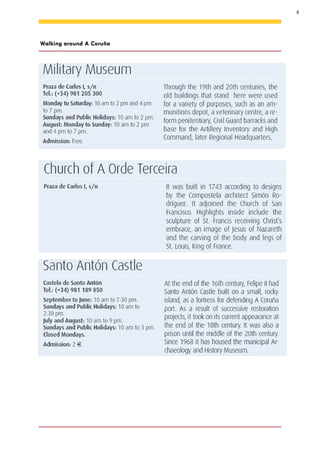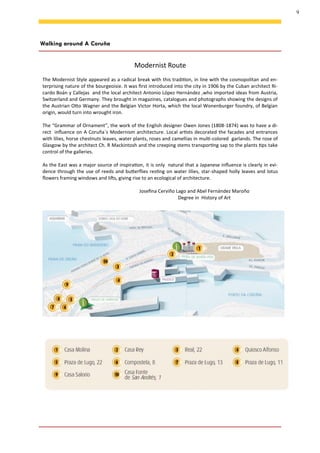This document provides an overview of the history and culture of A Coruña, Spain. It details that A Coruña was founded by various groups including Hercules, Celts, Phoenicians, and Romans. During the Middle Ages, A Coruña became an important port city and center for textile manufacturing. It played a key role during the Spanish Armada in the 16th century. The document then shifts to describing some of the architectural styles of A Coruña, including its Old Town and buildings exhibiting Modernist influences. Finally, it briefly mentions Pablo Picasso's time living in A Coruña as a child and developing his artistic talents.













